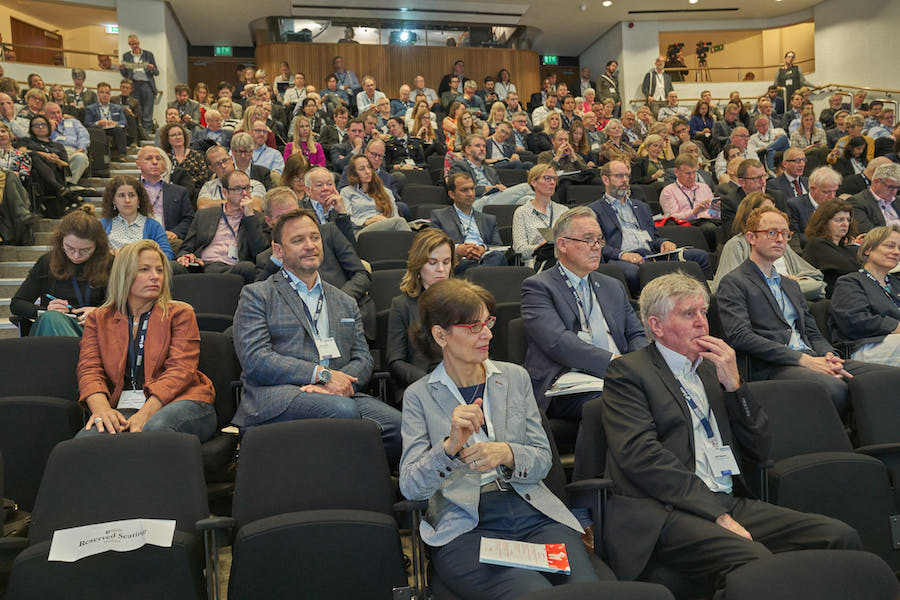In a tumultuous year when the resilience of healthcare globally has been tested to the limit by the pandemic, the pressure to adopt a climate-smart development path for designing, building, operating and investing in health systems and infrastructure has also increased exponentially.
The history books will pronounce 2020 a watershed year – a year when health systems, already strained in dealing with chronic and lifestyle illnesses among increasingly ageing populations, were thrown into a prolonged and arduous battle against a new highly infectious disease.
While we are not, as yet, able to determine what a post-pandemic world will look like, we have had time to reflect and look beyond the design of field hospitals and the adaptation of existing facilities. Our response to Covid-19 is one of three major directions of travel over the past decade in the way we design the physical and social architecture of healthcare, alongside climate change mitigation and realising the disruptive value of digital technology and medicine. 
The pandemic has exposed, in a brutal fashion, the fault lines in our health and care systems, and tested the relationship between the state and the citizen. The restrictive measures that many governments have adopted have asked us to re-evaluate the balance between personal liberty and social responsibility. In combination with the rapid advancement of digital and medical technology, how can our health and care systems and infrastructure be reshaped and reconstructed in a way that promotes, creates and protects health for all?
Indeed, Covid is one of two interconnected existential threats to human health, of which the climate and planetary health crisis presents a more fundamental challenge. The changing climate is leading to more frequent heatwaves and extreme weather events such as flooding, including the potential spread of infectious diseases.
But it’s not enough for health systems to limit themselves to treating health problems caused by air pollution and climate change; they must rise to the challenge of tackling them at source. There are positive signs of progress, with the NHS committing to a multi-year blueprint to become the world’s first carbon net-zero national health system, and new guidance from the World Health Organization aimed at supporting healthcare facilities to anticipate, respond to, recover from, and adapt to climate-related shocks and stresses, while minimising negative impacts on the environment.
Reconstruction offers real opportunities
Covid has been a cruel stress test of our social and healthcare systems and facilities. There is now a real chance to re-evaluate these systems – public, acute and social – and repair, strengthen or restructure them wherever necessary.
Over the past few months, there has been a sudden acceleration in the opportunities that digital medicine offers for remote diagnosis, consultation, chronic disease management, and home working. The basic structure of ambulatory medicine, in which system tolerances are managed via the waiting room, has confirmed the need for flexible, multi-acuity single rooms in hospitals, as well as an increase in skilled staff and critical and high-dependency beds.
Will a renewed focus on infectious disease lead to a separation of emergency and elective care or herald the return of the ‘fever’ hospital? Undoubtedly, the importance of movement systems in the design of the ‘chassis’ of our health facilities has been reinforced. Most importantly, it has demonstrated that much of the global healthcare estate is made up of ‘unhealthy’ buildings
Sustainable buildings equal healthy buildings
Over the next decade, there will be inevitable increases in capital investment in healthcare facilities. Against this delivery there must be a recognition that sustainable buildings are first and foremost healthy buildings, providing environments that support the wellbeing of patients, health workers and the wider community.
The past year has clearly demonstrated the need for better care structures and greater protection – and we all have personal responsibilities in engaging in and strengthening our communities. The crisis has reminded us what we have known for centuries – that poor housing, impoverishment and social disconnection damage health and widen health inequalities. It has also highlighted the critical importance of joining up our health and care system with public health so we can focus on the wider determinants of health that define how a progressive and equitable society functions for all.
This year’s congress is an opportunity to craft a blueprint for reconstruction, a creative assertion of the power of design – whether it be in population health, clinical systems, or architecture and design. We should embrace the three directions of travel – responding to Covid, the growth of digital technology, and climate change mitigation –acknowledging their potential to catalyse change and creativity, and proposing ways in which we can use them to radically improve our health systems and architecture.
We look forward to your participation and contribution to the exchange of knowledge needed to construct a new healthcare design narrative around design innovation in the face of existential threats. The 7th European Healthcare Design Congress & Exhibition will take place virtually on 14-17 June 2021. The Programme has now been launched and registration is open.

